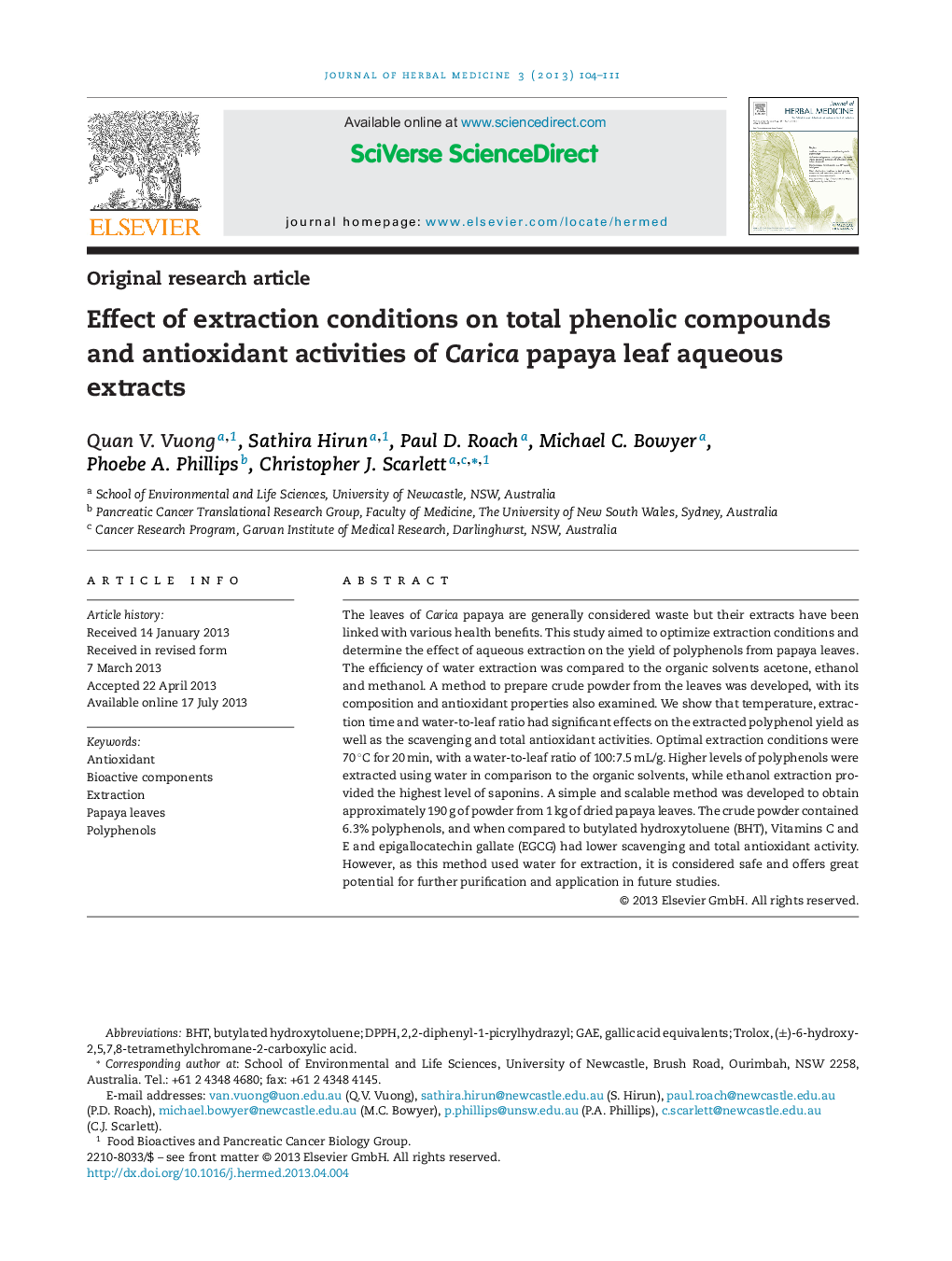| Article ID | Journal | Published Year | Pages | File Type |
|---|---|---|---|---|
| 2484125 | Journal of Herbal Medicine | 2013 | 8 Pages |
The leaves of Carica papaya are generally considered waste but their extracts have been linked with various health benefits. This study aimed to optimize extraction conditions and determine the effect of aqueous extraction on the yield of polyphenols from papaya leaves. The efficiency of water extraction was compared to the organic solvents acetone, ethanol and methanol. A method to prepare crude powder from the leaves was developed, with its composition and antioxidant properties also examined. We show that temperature, extraction time and water-to-leaf ratio had significant effects on the extracted polyphenol yield as well as the scavenging and total antioxidant activities. Optimal extraction conditions were 70 °C for 20 min, with a water-to-leaf ratio of 100:7.5 mL/g. Higher levels of polyphenols were extracted using water in comparison to the organic solvents, while ethanol extraction provided the highest level of saponins. A simple and scalable method was developed to obtain approximately 190 g of powder from 1 kg of dried papaya leaves. The crude powder contained 6.3% polyphenols, and when compared to butylated hydroxytoluene (BHT), Vitamins C and E and epigallocatechin gallate (EGCG) had lower scavenging and total antioxidant activity. However, as this method used water for extraction, it is considered safe and offers great potential for further purification and application in future studies.
